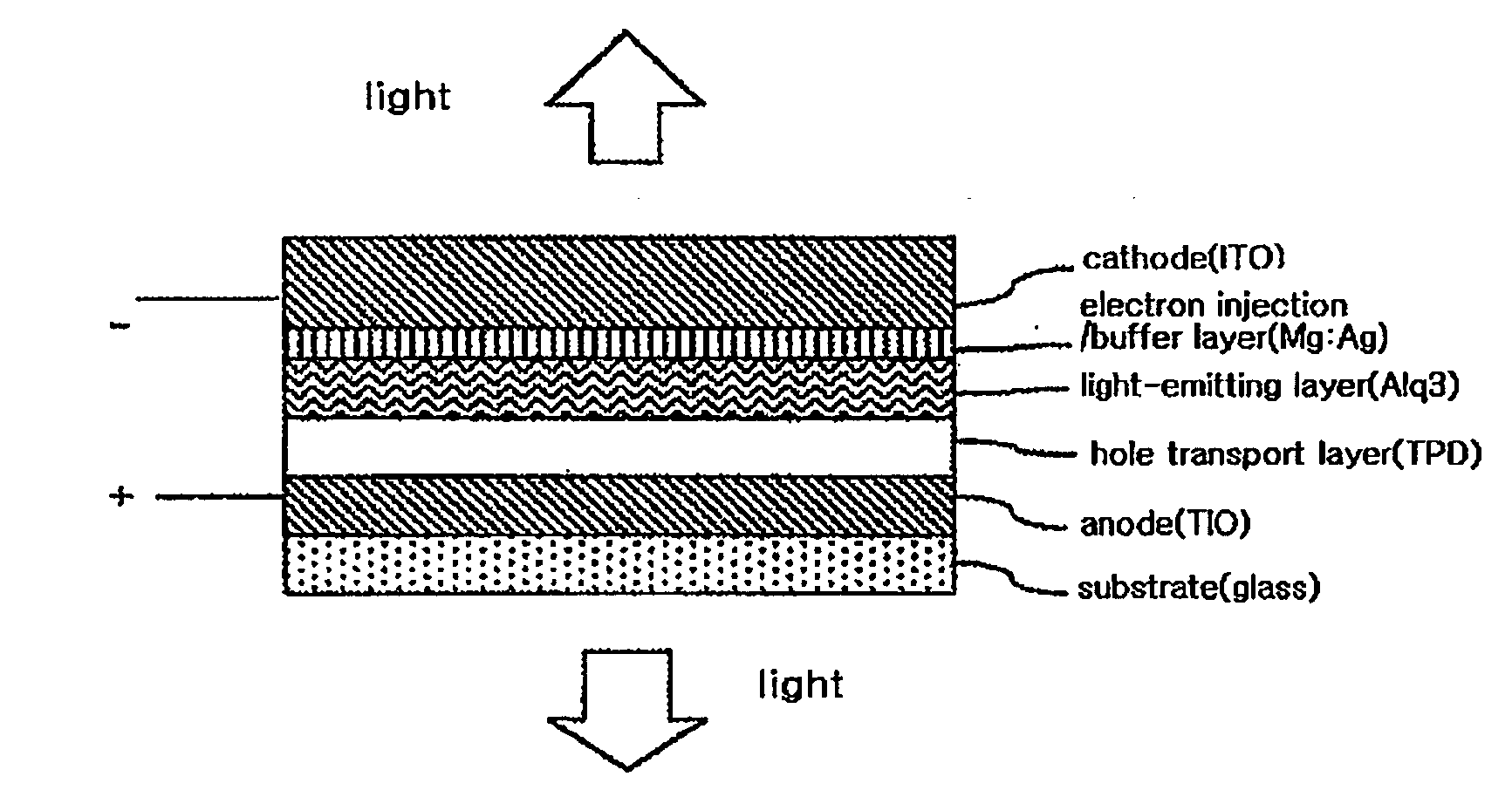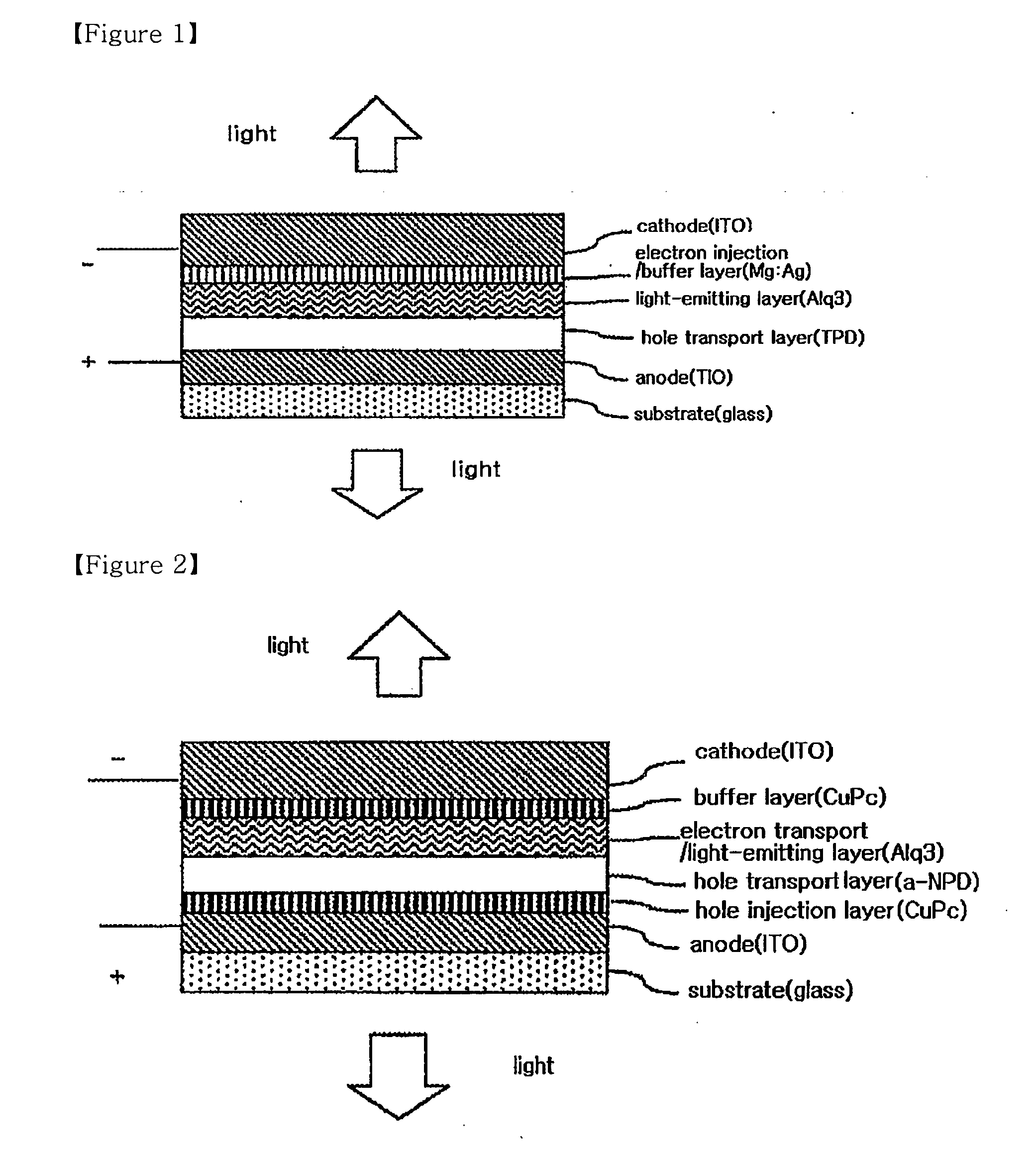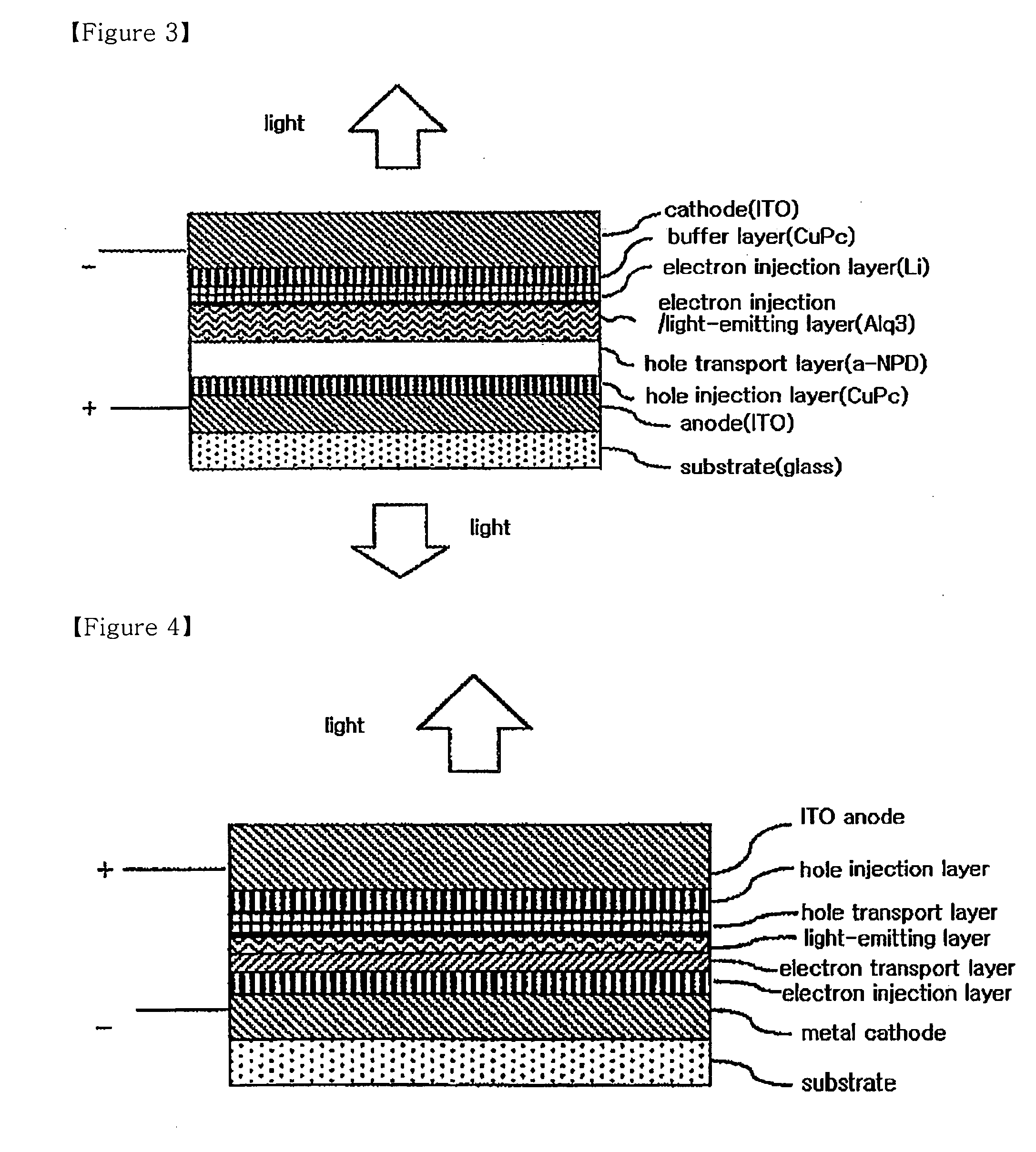Organic electroluminescent device and method for preparing the same
a technology of electroluminescent devices and organic materials, which is applied in the manufacture of electrode systems, electric discharge tubes/lamps, and discharge tubes luminescent screens, etc., can solve the problems of reducing the effective display aperture ratio, affecting the electric power consumed for driving and life time, and the reduction of the display aperture ratio. , to achieve the effect of improving the electron injection characteristic and preventing damage to the organic material layer
- Summary
- Abstract
- Description
- Claims
- Application Information
AI Technical Summary
Benefits of technology
Problems solved by technology
Method used
Image
Examples
example 1
[0057]On a glass substrate, a cathode (Al) having a thickness of 150 nm and an electron injection layer (LiF) having a thickness of 1.5 nm were sequentially formed by a thermal evaporation process. Then, on the electron injection layer, an electron transport layer consisting of a thin film made of the material comprising imidazole group represented by the following formula 1-1 comprising an imidazole group was formed to a thickness of 150 nm.
[0058]On the electron transport layer, an electron injection layer (LiF) having a thickness of 1.5 nm and Al layer having a thickness of 150 nm were formed sequentially to fabricate a symmetrical-type device as shown in FIG. 6 in which electric current runs only through electrons.
examples 2-6
[0064]Fabrication of Organic Electroluminescent Device
[0065]On a glass substrate, a cathode (Al) having a thickness of 150 nm and an electron injection layer (LiF) having a thickness of 1.5 nm were sequentially formed by a thermal evaporation process. Then, on the electron injection layer, an electron transport layer consisting of a thin film made of a material comprising an imidazole group used in Example 1 was formed to a thickness of 20 nm.
[0066]Then, on the electron transport layer, an Alq light-emitting host was co-deposited with C545T
(10-(2-benzothiazolyl)-1,1,7,7-tetramethyl-2,3,6,7-tetrahyro-1H,5H,11H-1)benzopyran o[6,7,8-ij]quinolizin-11-one) to form a light-emitting layer having a thickness of 30 nm. On the light-emitting layer, a hole transport layer consisting of a thin film made of NPB (4,4′-bis[N-(1-napthyl)-N-phenylamino]biphenyl) was deposited to a thickness of 40 nm. On the hole transport layer, a hole injection / buffer layer made of a compound (HAT) represented by t...
example 7
[0068]Fabrication of Organic Electroluminescent Device
[0069]A both-side emission type organic electroluminescent device was fabricated in the same manner as described in Examples 2-6 except that a cathode consisting of a thin Al film having a very small thickness of 5 nm formed on an ITO film having a thickness of 150 nm is used in place of the cathode consisting of the thin Al film having a thickness of 150 nm.
[0070][Measurement of Current-Voltage Characteristics and Light Emission Characteristics of Device]
[0071]To the organic electroluminescent device fabricated in Examples 2-6, each of reverse and forward electric fields was applied at a voltage increasing at increments of 0.2 volts while current at each voltage value was measured. The measurement results are shown in FIGS. 8 and 9, respectively.
[0072]Also, to the organic electroluminescent device fabricated in Examples 4-6, current was applied while gradually increasing current density from 10 mA / cm2 to 100 mA / cm2, and at the s...
PUM
 Login to View More
Login to View More Abstract
Description
Claims
Application Information
 Login to View More
Login to View More - R&D
- Intellectual Property
- Life Sciences
- Materials
- Tech Scout
- Unparalleled Data Quality
- Higher Quality Content
- 60% Fewer Hallucinations
Browse by: Latest US Patents, China's latest patents, Technical Efficacy Thesaurus, Application Domain, Technology Topic, Popular Technical Reports.
© 2025 PatSnap. All rights reserved.Legal|Privacy policy|Modern Slavery Act Transparency Statement|Sitemap|About US| Contact US: help@patsnap.com



